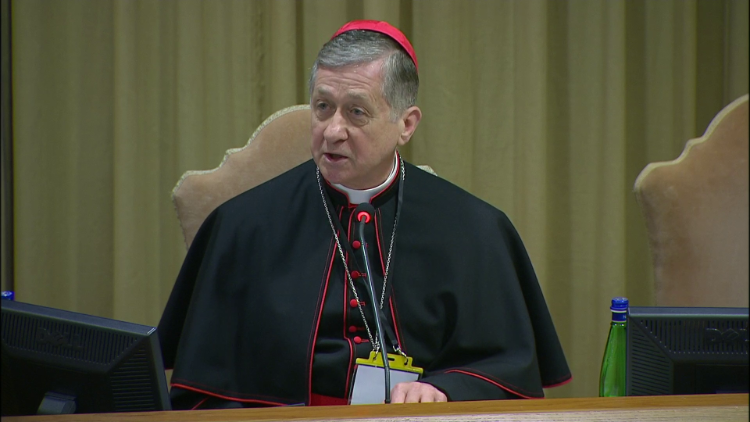
Cardinal Cupich on ‘Traditionis custodes’: Expressing unity through identical prayer
By Vatican News staff reporter
With the motu proprio Traditionis custodes, Pope Francis intends “to re-establish throughout the Church of the Roman Rite a single and identical prayer that expresses its unity,” according to the liturgical books promulgated following the Second Vatican Council, says Cardinal Blase Cupich.
In an article published on the blog “Pray Tell,” the Archbishop of Chicago says, “There are not two forms of the Roman Rite, because the word ‘reform’ means something, namely that we leave behind the former way of celebrating the sacraments and adopt a new form.”
Cardinal Cupich goes on to explain that Pope Francis has offered three “important guiding principles for receiving and implementing Traditiones custodes: the unity of the Church; the continuity of the reforms of Vatican II with the Tradition of the Church; and the role of the Bishop as “sole moderator, promoter, and guardian of all liturgical life in his diocese.”
Unity of the Church
The Cardinal maintains that when St John Paul II and Pope Benedict expanded the possibility of celebrating Mass in the pre-conciliar form, their goal “was to heal the rift with the members of the Society of St Pius X,” who have questioned the reforms of the Second Vatican Council.
“Sadly,” says Cardinal Cupich, “this was not achieved.”
An authentic action of the Holy Spirit
With Traditionis custodes, Pope Francis also intends to ensure that there is “a solid unequivocal recognition” by all Catholics, that “the Second Vatican Council and its reforms are not only an authentic action of the Holy Spirit but also are in continuity with the Tradition of the Church.”
This, he says, means full acceptance of the liturgical rites promulgated by the post-conciliar popes.
Guardians of the liturgy
Finally, says Cardinal Cupich, Pope Francis wants to emphasise that, in each diocese, the Bishop alone has responsibility for the liturgical life of the local Church.
This means only the Bishop can decide if and when to permit liturgical celebrations according to the previous usage; and that the Bishop “is duty bound to make his decision in a way that promotes in his diocese a return to a unitary celebratory form.”
Pastoral accompaniment
Concluding his reflection on Pope Francis’ motu proprio, Cardinal Cupich says pastors must “accompany people in coming to an understanding of the link between the way we worship and what we believe,” while emphasising that the Pope ultimately desires a "unitary liturgical practice using only the reformed liturgical books.”
Cardinal Cupich suggests visiting with the faithful attached to the older books to help them understand the principles of renewal called for by the Council; helping them appreciate how the new rites lead them to greater use of scripture and traditional prayers.
He also suggests the possibility of “creatively” including in the new Mass elements from the previous manner of celebrating that are already permissible as options – including, for instance, the use of Latin, Gregorian chant, and extended periods of silence in the liturgy.
“I believe,” says Cardinal Cupich, “that we can use this opportunity to help all of our people come to a fuller understanding of the great gift that the Council has given us in reforming the way we worship.”
Thank you for reading our article. You can keep up-to-date by subscribing to our daily newsletter. Just click here








